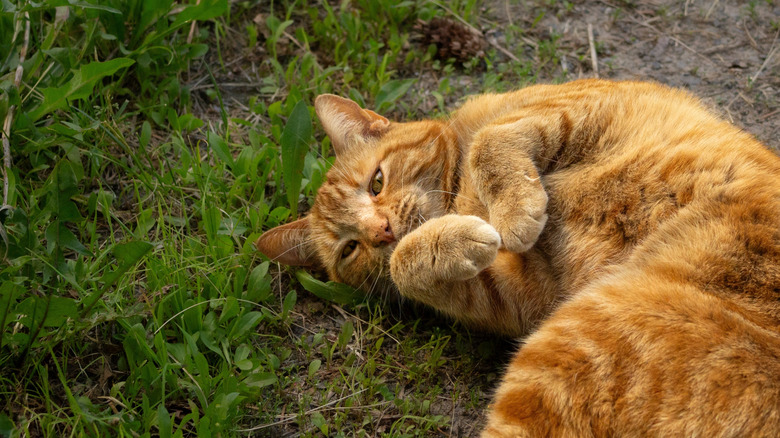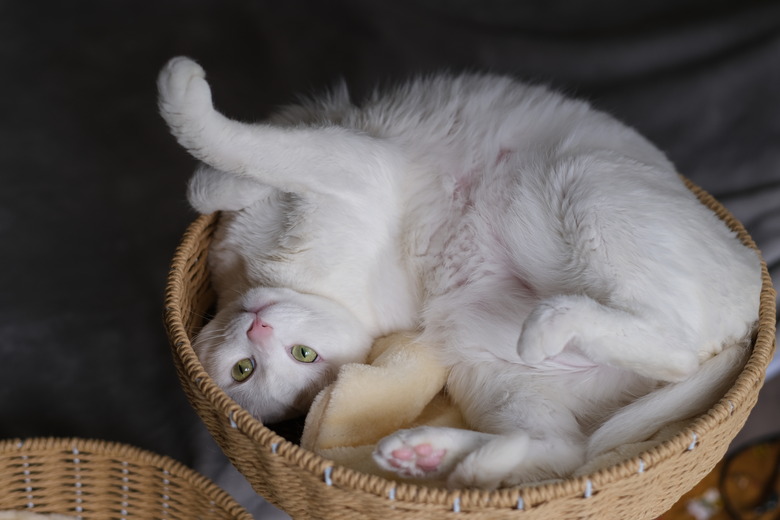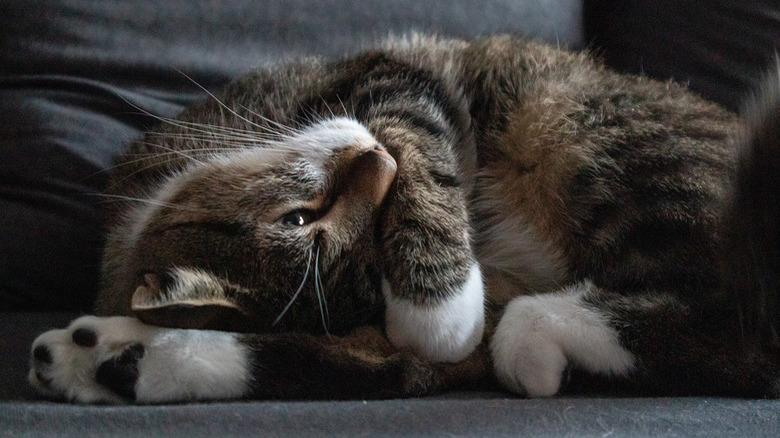Why Do Female Cats Roll Around After Mating?
Cats are tactile creatures who love to be stroked and to rub their whiskers and butt their heads against objects, people, and other animals. When an unspayed female cat — also known as a queen — comes into heat, usually in the spring and summer months in the Northern Hemisphere, she becomes even more physical and persistently rubs against things and rolls on the floor. If stroked, she will raise her hindquarters and tread with her back feet. After mating, she will roll around frantically for several minutes in an instinctive reaction that may be related to ovulation.
Cats getting ready to mate
Unlike a queen, an unaltered male cat — also called a tomcat — doesn't have a heat cycle and can mate at any time. Successful mating depends on the readiness of a female, so a tom will go wherever he's receiving signals from a queen in heat. He will often do whatever is necessary to gain access to a female who's ready to mate.
A queen will make a special yowling sound that she only makes when seeking a mate, and a tomcat vocalizes right back to her. She will also produce hormones and pheromones that are present in her urine, which is what attracts tomcats to her. Although she is indicating her readiness to mate, the tom will approach with caution and follow her around, keeping out of paws' reach until she adopts a crouching position with a raised rear end. This position is necessary for success.
At this point, he will grab her by the scruff of the neck and mount her. He does this to keep her in position and prevent her from biting him while the event is taking place. He then thrusts his pelvis against her until he penetrates her with his penis for 1 to 2 minutes.
Cats inducing ovulation
As the male ejaculates, the female will let out one or more loud screams. The male's barbed penis scratches her insides and induces ovulation. The scratching is painful, but pregnancy will not occur without this stimulation. Eggs aren't released from the ovaries until after the male has ejaculated, so the first mating will often not produce kittens.
Female cats usually need to mate three to four times in a 24-hour period to successfully achieve pregnancy, and she will often mate with more than one male. This increases the chances of pregnancy, and it may lead to kittens of the same litter having different sires. The female's heat cycle will end within a day or two of inducing ovulation.
Female cats after mating
As the male releases his grip on her neck, the female often will swat and hiss at him. Immediately after mating, the queen may furiously roll around on the floor. She will change positions and lick at her genital area and at her back where the male cat touched her. She will be quite frenzied and move from one action to another for several minutes.
Since triggering ovulation, her hormones are changing significantly, and are likely the cause of her behavior after mating. She may also be trying to clean the scent of the tom off her before she accepts another mating.
Tomcats after mating
After mating, the tom is normally eager to move away from the female to avoid getting scratched and swatted at. The female makes it clear that she wants him to keep away from her. The tom will often leave her sight but stay nearby, waiting for her to be receptive again. Once she is ready, he will return to mate again. If the mating results in kittens he will have no part in raising them.


